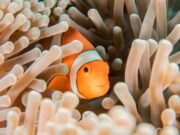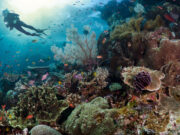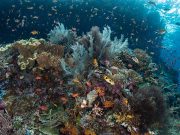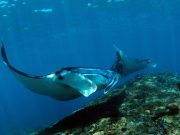1. Are they dangerous?
With tentacles three metres long and covered with stinging cells, it's better not to get too close to the Lion's Mane jellyfish. They have a very severe sting that can...
Dugongs have been documented in China for hundreds of years, but now scientists have concluded that they are functionally extinct there.
Giant sea fans are common and conspicuous in tropical seas, and a favourite with underwater photographers who often pose their buddy behind one.
Diver behind giant sea fan. Photo credit: Garry Frazer.
Take part in the Shark Trust's community science project and to help gather vital information about global shark distribution. During the last week in July 2022 they want buddy pairs, dive centres, clubs and boats to record...
We talk to Nuria Baylina about making the Manta Ray Azores project self-sufficient with the help of holidaying scuba divers.
Marine biologist Anna Sobral founded Manta Catalog Azores in 2012 to develop understanding of manta and devil rays. The Azores is one of the few places that these rays are known to congregate: the large Sicklefin devil...
Stingrays can calculate. Scientists have trained the rays to do simple adding and subtracting. (They learned addition quicker, just like children do.)
Take your citizen science to the next level with Operation Oyster. Divers are asked to incorporate oyster data gathering into their regular diving activities throughout the year.
Restoring whale numbers would mean more iron in the water from their poo, which would mean more phytoplankton, and more carbon dioxide taken up from the atmosphere. Whales once contributed to as much carbon removal as forests of entire continents.
What happens to baby turtles after they scramble off the sandy beaches where they are born and swim into the open ocean?





























